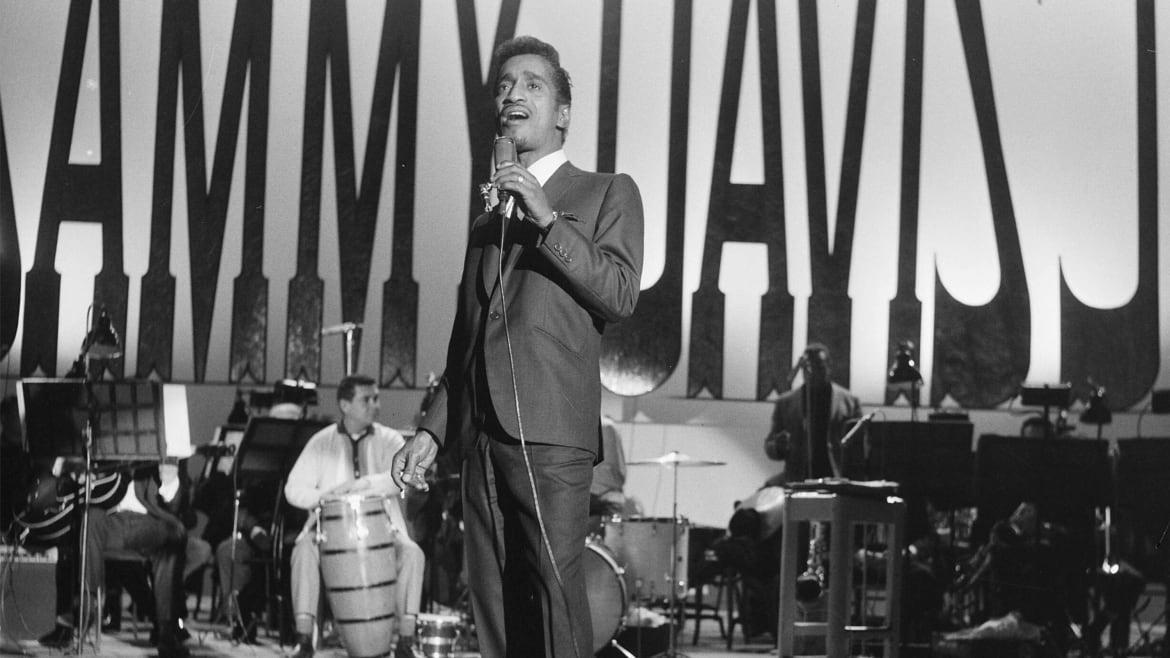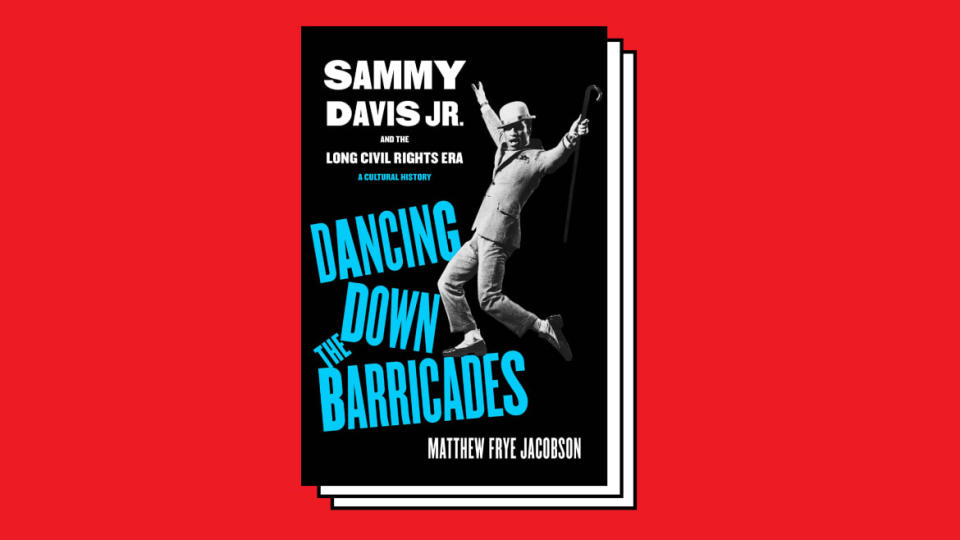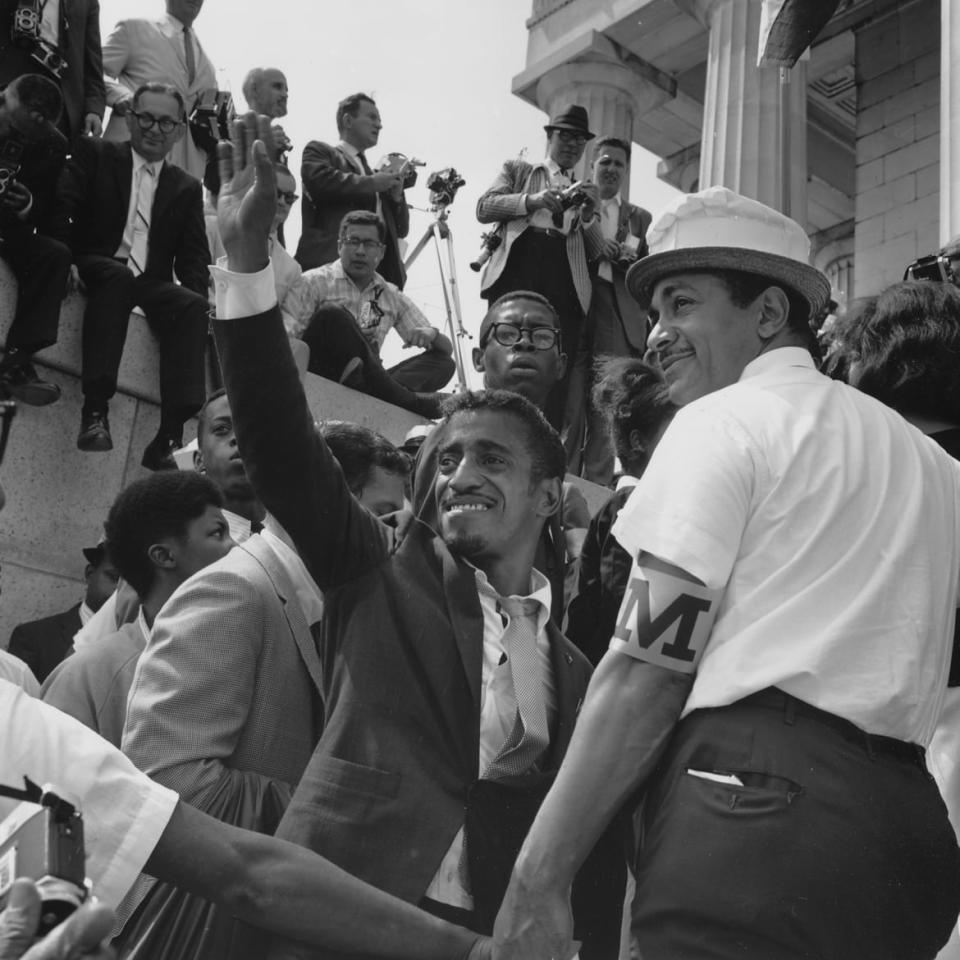Sammy Davis Jr. Broke Barriers—Sometimes at His Own Expense

In the mid-1960s, Sammy Davis Jr. ranked behind only Martin Luther King Jr. and Muhammad Ali as the most famous Black person in the world. Davis, however, was certainly the most welcome of the three in many white living rooms across the U.S.; a palatable, often upbeat presence for the white audiences whom he entertained for a living. But to remember him only for being the sole Black member of the Rat Pack, a pal of fellow crooners Frank Sinatra and Dean Martin, ignores the complex relationship between Davis and Black politics during the civil rights and Black Power eras.
That’s the focus of the new book Dancing Down the Barricades from Matthew Frye Jacobson, a distinguished professor of American Studies at Yale and the author of seven previous books mostly focused on the history of race in the U.S. (Music fans might also remember his entry for the 33 1/3 series about the revolutionary folk singer Odetta.) As Jacobson explains in his new work, out this week, in addition to Frank and Dino, Davis was pals with Black leaders including King, Ali, and James Baldwin. In 1971, Davis even wore a “Free Angela Davis” button during a PBS interview in support of the movement to free the Black activist from jail. But in his varied relationships and alliances with everyone from Harry Belafonte to Richard Nixon, he oscillated between being cherished and being attacked by Black and white people alike.

Although it covers plenty of details about Davis’ public and personal life, Dancing Down the Barricades is not intended to be a complete biography of the showbiz icon, who died of throat cancer in 1990. Jacobson instead identifies key periods in Davis’ rise to fame and examines his career in relation to the surrounding Black politics of the times. The result is a lively, often surprising journey that takes readers from the Harlem Renaissance through the Black Power era.
Davis was born in December 1925, making him one year younger than his Harlem compatriot James Baldwin. His Afro-Cuban parents were Sammy Davis Sr., a Vaudeville tap dancer, and Alvera Sanchez, a stage performer. Davis, a child prodigy with his feet, first started traveling the Vaudeville circuit at the tender age of 2. The young performer, Jacobson argues, came of age precisely as the minstrel traditions of Vaudeville fell out of favor. Despite tap’s connections to African dance traditions, Harlem Renaissance figureheads including Alain Locke viewed it as a variation of minstrelsy. Even at a young age, Davis’ style seemed regressive.
The Green Book Helped Black Motorists Survive America’s Highways During Jim Crow
It was during his experience in the Army during World War II, Jacobson writes, when Davis “came of age both literally and figuratively as an entertainer.” Despite the racist beatings (as well as likely sexual assaults) endured by Davis at Fort Warren in Wyoming, he found success as a song-and-dance performer entertaining the troops. Davis, Jacobson says, thus “emerged a can-do believer in the anti-racist power of his own abilities” as an entertainer. By making white audiences embrace him, Davis believed he was advancing the larger cause of equality.
Jacobson’s own writing style is scholarly yet accessible, not bogged down with too many critical theory buzzwords. At times, his lens can be a bit kaleidoscopic, with Davis not directly connected to the author’s discussion of simultaneous events; that tendency is most evident in the wartime experience chapter. But when Davis is at center stage on the Vegas Strip and in Hollywood in the 1950s, the book really takes off.
Particularly dynamic are Jacobson’s discussions of the racial hostilities that Davis and other Black entertainers faced off-stage in Las Vegas, as well as Davis’ starring role as “Sportin’ Life,” the underworld hustler in Otto Preminger’s Porgy and Bess (1959), a big-budget MGM production of the George Gershwin opera about Black life in South Carolina under Jim Crow. Many among the film’s all-star, all-Black cast objected to the story’s racist caricatures, with Sidney Poitier later expressing regret that he ever agreed to play Porgy. But as one performer noted, Davis was “happy as a lark” while on the set—and even more thrilled when film critics showered praise on his performance.

Davis had no shortage of detractors, as illustrated by Sam Cooke’s observation that “When the whites are through with [him], he won’t have anywhere to play.” Cooke’s “A Change Is Gonna Come” remains the undisputed anthem of the civil rights era, but unlike that R&B legend, Davis attended the March on Washington in August 1963, aligning himself with the movement. A year earlier, in Birmingham, Alabama, MLK was on stage announcing a benefit show headlined by Davis when an angry young white man rushed the stage and began beating up the civil rights leader. King’s assailant turned out to be a member of the American Nazi Party angry at the mention of Davis’ name, given that Davis was a Black man who had “converted to Judaism [and was] married to a white woman.”
Throughout the 1960s, Davis served as a prolific fundraiser for Black causes, at one point bankrolling a documentary about the Black Panthers. Such efforts placed him on J. Edgar Hoover’s radar. But whatever support Davis drummed up on the left crumpled in 1972, when the entertainer endorsed then-President Nixon in his re-election campaign: a move that made the singer a target of the Black community’s ire. Davis’ explanation that the Nixon administration’s support for Black colleges had earned his support rang hollow.
“A society does not dismantle [legal] segregation without the work that culture” plays in changing perceptions of different groups, Jacobson concludes. While forging his path to fame in white-dominated arenas, Davis just as often challenged stereotypes as reinforced them. And while much of his artistic output may not withstand the test of time, he nonetheless remains an essential yet divisive player in the fight for Black equality.
He did it his way, one might say.
Get the Daily Beast's biggest scoops and scandals delivered right to your inbox. Sign up now.
Stay informed and gain unlimited access to the Daily Beast's unmatched reporting. Subscribe now.

